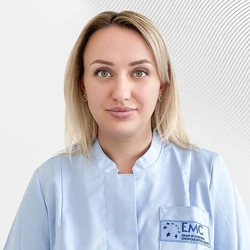Infertility
The advantages of treating allergic rhinitis in a child at a European Medical Center:
- Modern diagnostic and treatment methods with proven effectiveness
- Allergologists and immunologists with extensive work experience and internships abroad
- Fast and most accurate diagnosis
- Personalized therapy selection
- Possibility of additional consultation of any child specialist
Allergic rhinitis (AR) is inflammation and swelling of the nasal mucosa due to exposure to causally significant allergens. It can be acute or chronic. Allergic rhinitis causes nasal congestion and sinuses. When sinuses are filled with fluid, bacteria can develop in them, causing headaches and yellow discharge.
According to WHO, allergic rhinitis is present in 20-40% of the world's population. The prevalence of allergic rhinitis among children ranges from 8.5% in 6 years to 34% in adolescents. It is more common in boys than in girls. The incidence rate has been increasing since the age of 6 and reaches a peak by the age of 15-18.
Classification
Traditionally, allergic rhinitis is classified based on the duration and severity of symptoms.
Depending on the allergen involved, it can be seasonal (pollen or fungal allergens) or year-round (house dust mites, cockroaches, animal dander). However, it is not always possible to distinguish seasonal from year-round allergic rhinitis, therefore, the duration of symptoms is more often used as a criterion for classification.
- intermittent (seasonal or year-round, acute): symptoms last less than 4 days a week or less than 4 weeks a year;
- persistent (seasonal or year-round, chronic, prolonged): symptoms last more than 4 days a week or more than 4 weeks a year.
According to the severity of symptoms:
- Allergic rhinitis of mild course (insignificant symptoms, no sleep disorders and decreased quality of life: physical activity does not decrease, academic performance remains).
- Allergic rhinitis of moderate severity and severe course (symptoms lead to sleep disorders, decreased physical activity, quality of life and rest; deterioration of academic performance).
In addition, exacerbation and remission of allergic rhinitis are separately noted.
Causes of allergic rhinitis in a child
The disease is based on an allergic reaction that develops in response to contact with an allergen. Such allergens are often small volatile particles such as pollen from trees and grasses, house dust, fungal spores, wool or animal skin particles. Food products are also among the possible allergens.
A child's allergic rhinitis may worsen under the influence of additional factors, such as cold air or pungent odors.
Seasonal allergic rhinitis develops during the period of pollination of grasses and trees. Seasonal rhinitis is characterized by seizures that occur within a few hours after exposure to an allergen and have a clear seasonal pattern.
Year-round allergic rhinitis develops at any time of the year and is inherently chronic.
The severity and duration of the attacks depend on the time of contact with the allergen.
Symptoms
The symptoms may not appear at the same time, but in general, the more severe the attack, the more diverse the clinical picture.
The main symptoms of acute allergic rhinitis in children include:
- nasal congestion and profuse discharge ,
- sneezing attacks,
- cough,
- itchy nose,
- watery eyes and irritation.
Itching and scratching may also appear in the nasopharynx. Due to a prolonged attack, the face and eyelids may swell. With year-round allergies, the risk of sinusitis or otitis media is added to the described symptoms. As a result of nasal congestion, snoring appears, rhinolalia (nasal voice) may appear.
During seizures, the child becomes irritable and may refuse to eat. This is due to the dulling of taste and sense of smell. In addition, frequent blowing of the nose provokes stuffy ears, causing additional discomfort.
Diagnostics
The main goal of diagnosis is to differentiate allergic rhinitis from similar diseases. Among them:
- conjunctivitis;
- pollinosis;
- urticaria.
To determine the treatment strategy, an anamnesis is also collected, which facilitates the search for a key allergen. Allergy tests are conducted to determine the desired trigger.
Skin tests: the doctor makes small scratches on the child's hand and drips special test solutions containing particles of common allergens on them. The goal is to evaluate the immediate immune response.
5 days before the event, you should stop taking any medications that may affect the result.
The test is not recommended for children under one year of age.
Blood ELISA for specific antibodies produced by the immune system in response to an irritant. The test can be performed for children of any age.
Possible additional examinations: X-ray or CT scan of the nasal sinuses, endoscopic examination, analysis of nasal discharge. They help to clarify the diagnosis and severity of allergic rhinitis.
Treatment
Includes:
- restriction of allergen contact
- drug therapy
- allergen-specific immunotherapy (ASIT)
Restriction of contact with allergens
It is impossible to completely avoid contact with many allergens. However, even partial limitation of allergen exposure facilitates the course of AR and simplifies therapy. Restrictive measures are effective only in the case of a preliminary allergological examination and accurate detection of the allergen.
- Pollen allergens. In spring, the symptoms are caused by the dusting of trees (birch, alder, hazel, oak), in the first half of summer - plants (hedgehog, timothy, rye), in late summer and autumn - weeds (wormwood, plantain, ragweed). To limit contact with allergens, it is necessary to keep indoor and car windows closed, use air conditioning systems, and limit the time spent outdoors. After a walk, it is advisable to take a shower and put your outerwear in a closed closet.
- Mold spores. It is necessary to thoroughly clean humidifiers, hoods, and maintain a relative humidity of at least 50%.
- Allergens of house dust mites. The use of special anti-mite bedding and mattress pads helps to reduce the concentration of mites, but does not significantly reduce the symptoms of allergic rhinitis.
- Animal allergens. It is necessary to completely exclude contact with the animal.
- Food allergens (cross-reaction with pollen sensitization).
It is important to remember that the improvement of the condition does not occur immediately after the elimination of allergens, it takes time.
Drug therapy
Antihistamines
Second-generation antihistamines are better tolerated and have a faster onset of effect. However, in some cases they can have a mild sedative effect.
Intranasal corticosteroids
Intranasal glucocorticosteroids (GCS) actively act on the inflammatory component of AR and effectively reduce the severity of itching, sneezing, rhinorrhea, nasal congestion and ocular symptoms. They are well tolerated. To increase the effectiveness, it is recommended to cleanse the nasal cavity of mucus before the administration of drugs, as well as the use of moisturizers.
Systemic corticosteroids
They are recommended only if absolutely necessary in case of severe persistent course and insufficient effect of standard therapy.
Given the high risk of side effects, the use of these drugs in children is very limited.
Leukotriene receptor antagonists
Montelukast is used in children, including with concomitant bronchial asthma.
Other drugs
Moisturizers
Rinsing the nasal cavity with saline solution or sterile seawater solution helps to moisturize and purify the nasal mucosa.
- Alternative therapies in children are not recommended.
- If symptoms persist for 1.5–2 weeks, additional examination and review of the treatment regimen are recommended.
- In case of seasonal allergic rhinitis, regular treatment is recommended to begin 2 weeks before the expected onset of symptoms.
- Autoimmune diseases
- Oncological diseases
- Immunodeficiency
- Mental illness
- Uncontrolled asthma (temporary contraindication)
- Poor individual tolerance of the method
- Ventilate the room less frequently during the warmer months to reduce the amount of penetrating pollen.
- Do not dry your child's clothes or bedding outside during the flowering season.
- Install an air filter in the nursery and change the cleaning element in a timely manner to prevent the spread of dust and pollen particles through the air.
- Carry out daily wet cleaning in the nursery. If the cause of allergic rhinitis is a pet, you will have to limit or stop its contact with the child.
- If possible, leave during the period of active flowering and dusting.
- Minimize the number of soft toys, carpets, and curtains in the apartment – they can accumulate allergens.
Allergen-specific immunotherapy (ASIT)
АСИТ develops immunological tolerance to the allergen. Due to the consistent introduction of the allergen into the body in microdoses, resistance to it is gradually developed. The therapy has a long-lasting effect and reduces the risk of developing bronchial asthma. ASIT improves the quality of life of the patient and his family members.
The duration of therapy is usually 3-5 years. The effect of the treatment has been noted since 1 year of therapy.
The selection of the drug and the method of administration (sublingual (sublingual) or injectable) are carried out by the doctor individually in each case. Most often, sublingual ASIT is chosen for children.
Contraindications to ASIT
Prevention
To get rid of an allergic rhinitis, the child's contact with the allergen should be minimized immediately after it is detected.
Preventive measures should be carried out wherever a child can stay for a long time. Only thanks to an integrated approach, including competent therapy and prevention, it is possible to minimize the manifestations of allergic rhinitis and eliminate the discomfort experienced by the child.
A visit to an allergist is recommended for every child, the sooner the better. It is important to find out from early childhood if a child has allergies and identify causally significant allergens.
It is advisable to provide quick access to this information in case of an emergency. It can save a child's life. Unfortunately, there are situations when, due to lack of information, a person is injected with a drug to which he is allergic, which can lead to death.
At the allergist's consultation, it is necessary to tell in as much detail as possible not only about the child, but also about the parents, and possibly even about other relatives. It is advisable to prepare in advance and study the family history on this topic.
Pediatric allergologists and immunologists are receiving appointments at the EMC Children's Clinic at 26 Trifonovskaya Street.
Why the EMC
The first and only clinic in Russia, created in the image of the world's leading clinics
EMC is a multidisciplinary center offering patients a high level of medical services and a personalized approach
Worldwide recognition and awards
 Learn more
Learn more
Worldwide recognition and awards
 Certificates and licenses
Certificates and licenses
Make an appointment for a consultation
Specify your contacts and we will contact you to clarify the details
Reviews
and new products of the EMC




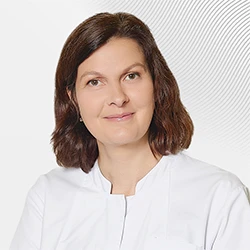


.webp)
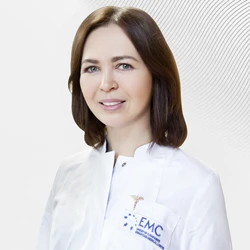
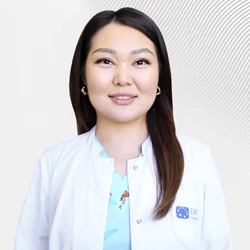
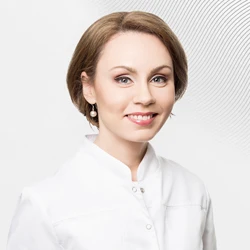

.webp)




